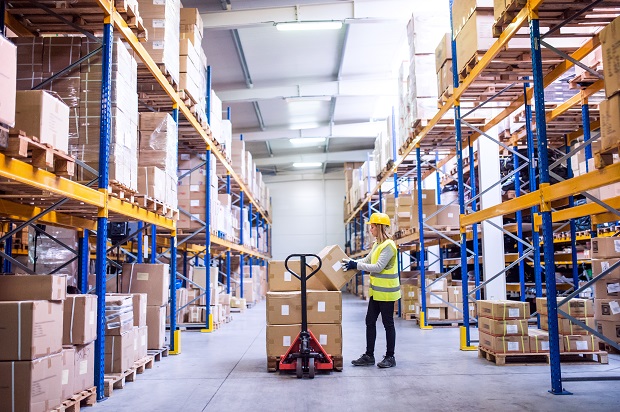Storing food items in a warehouse requires higher quality standards than storage of non-food products. A typical warehouse comprises dry, frozen, and refrigerated storage units. Dry storage is for food products that don’t need temperature regulations, such as grain and rice. Frozen storage is suitable for perishable food items, like dairy products, meat, and fish. Refrigerated storage is for foodstuff that must be maintained at specific temperatures without necessarily being frozen.
 Since there’s always the risk of the products going bad, handling food items is a delicate process. Thus, you must maintain high hygiene standards. Failure to do this may significantly compromise your customers’ health.
Since there’s always the risk of the products going bad, handling food items is a delicate process. Thus, you must maintain high hygiene standards. Failure to do this may significantly compromise your customers’ health.
 With that in mind, below are six incredible tips for setting up a food-grade warehouse:
With that in mind, below are six incredible tips for setting up a food-grade warehouse:
- Purchase The Necessary Equipment
Having the right equipment for your warehouse is key to maintaining its food-grade status. One of the critical pieces of equipment you must have is food checkweigher systems. Remember, the law demands that you must pack all food items at the correct, listed weight. Underweight packages will only attract customer complaints, tainting your brand’s image.
To maintain hygiene, ensure you buy checkweighers that are easy to disassemble and clean. Aside from this, you’d want to invest in the following equipment and tools:
- Bins
- Stackable containers
- Wire mesh baskets
- Industrial scales
- Packing tables
- Strapping and binding equipment
- Conveyors
- Thermometers for temperature checking
- Freezer
- Pallet retrievers
- Enforce Good Hygiene
Hygiene is an essential factor in food storage. Failure to maintain cleanliness may lead to contamination of your products. Thus, you must ensure your warehouse is clean in and out.
Here are a few indications of poor hygiene practices:
- Stagnant water and weeds within your facility
- Leakages in the walls and roof of your warehouse
- Holes in the windows
- Rodent paths and caves in or around your facility
- External damage
- Foul odor from other products due to cross-contamination
You’d want to avoid all the above scenarios. To do so, you can do the following:
- Set aside a day for general deep cleaning
- Clean the shelves holding the food items as often as possible
- Introduce a strict cleaning schedule and follow it to the letter
- Install hygienic storage solutions, such as state-of-the-art shelving units with antibacterial properties
- Educate the warehouse workers on hygiene standards
- Implement the ‘first in first out’ inventory management strategy
- Label all key areas properly to ensure warehouse staff don’t wander into sections they should keep off
- Acquire Licenses And Permits
Before setting up your food-grade warehouse, ensure you obtain the required licenses and permits. The exact permit depends on the products you trade, as well as the size and location of your warehouse. Having these documents is essential because:
- Licenses affirm that your warehouse is allowed to stock and deliver food items.
- Permits prove that your products and storage conditions are safe.
- A state official must ascertain that your warehouse deserves the food-grade status before issuing the permit. In this process, they can recommend various modifications to your warehouse to make it food-safe.
- Choose A Proper Location
It’s advisable to build your warehouse as close as possible to the consumers of your products. Having it far away from them may result in products going stale in the course of transportation. Below are various options you have when setting up a warehouse:
- Building: Depending on your long-term goals, you may decide to build your warehouse. For instance, if expansion is one of your goals, building will be the best option.
- Buying: This is a good option since you don’t have to get into the hard work of designing and constructing the warehouse from scratch. Just note that buying a warehouse might be more expensive than building your own.
- Leasing: This is the cheapest method of the three. You can also bargain on the monthly charges until you settle on a comfortable price. Since you’re not financially bound to the property, you may move out whenever you feel like changing location or your business needs change.
Whichever option you go with, make a point of scrutinizing the surroundings to ascertain they’re as clean as possible. For instance, it would be futile to locate your warehouse near a dumpsite. The risk of contamination in such areas is very high with all the flies hopping between the trash and the food in storage.
- Control Pests
You must develop pest preventive measures in your warehouse. Rodents and insects are a common cause of food contamination in warehouses, hence you’d want to shut them out. Here are some measures you can take:
- Set rodent traps
- Spray pesticides around the warehouse to keep pests away
- Create and implement an effective sanitation program
- Hire professional pest control services to give you wholesome solutions
- Use pest monitoring gadgets to evaluate the effectiveness of the different control methods
- Test any incoming products to ensure they’re pest-free
- Install a pest-proof door to keep all rodents and insects out of your premises
- Use hermetic storage techniques to deprive pests of oxygen.
- Build A Competent Team
Running a food-grade warehouse entails a lot of work, which you may not manage to handle independently. So, you need to hire qualified and committed personnel with the requisite training in handling food hygienically. And it’s not just the packers who should be conversant with food handling best practices. All your employees––from the gatekeeper to the cashier––must be knowledgeable about maintaining excellent hygiene in the warehouse.
Here are some of the team members you’ll need to bring onboard:
- Stocking associates: They ensure that the warehouse is well organized and that you never run out of stock.
- Clerks: Warehouse clerks provide customer services. They provide information to clients and ensure their needs are met.
- Material operators: A material operator takes inventory of items and packs them. Sometimes, they may handle machines and vehicles.
- Machine handlers: They operate and maintain different machines and gears
- Shipping personnel: They manage the goods to be received and those to be delivered.
Once part of your workforce, you’d also want to train them continuously, say after every year. You can enroll them in short courses now and then reinforce their food-handling expertise.
Conclusion
Establishing a food-grade warehouse isn’t a one-day job. It starts right from the construction stage up to the point stored products are released from the warehouse. In short, maintaining the food-grade standard calls for excellent mastery of hygiene principles throughout the storage chain. Ensuring high cleanliness standards protects the stored foods from going bad. Consequently, the customers’ health is always safeguarded, boosting your image.




Comments are closed.